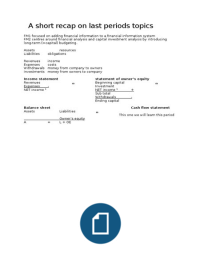Summary
Summary Financial Management 2 - CH 3, 5, 6, 8, 12, 13
- Course
- Institution
Summary of FM2 including a recap on FM1, CH 5, 13, 8, 3, 6, 12. Clear summary with everything included. examples, theory, figures, explanations, pictures, etc.
[Show more]



